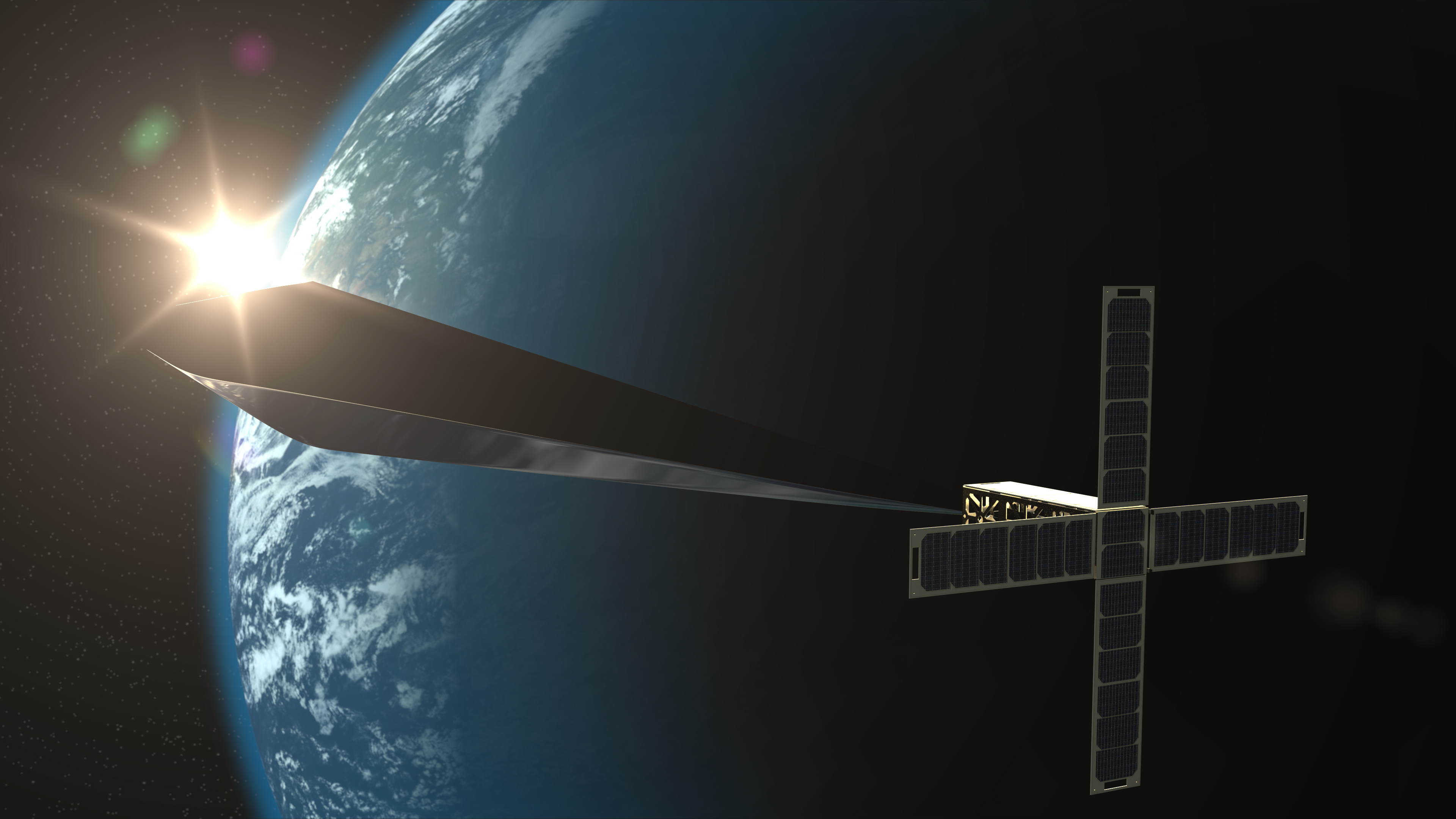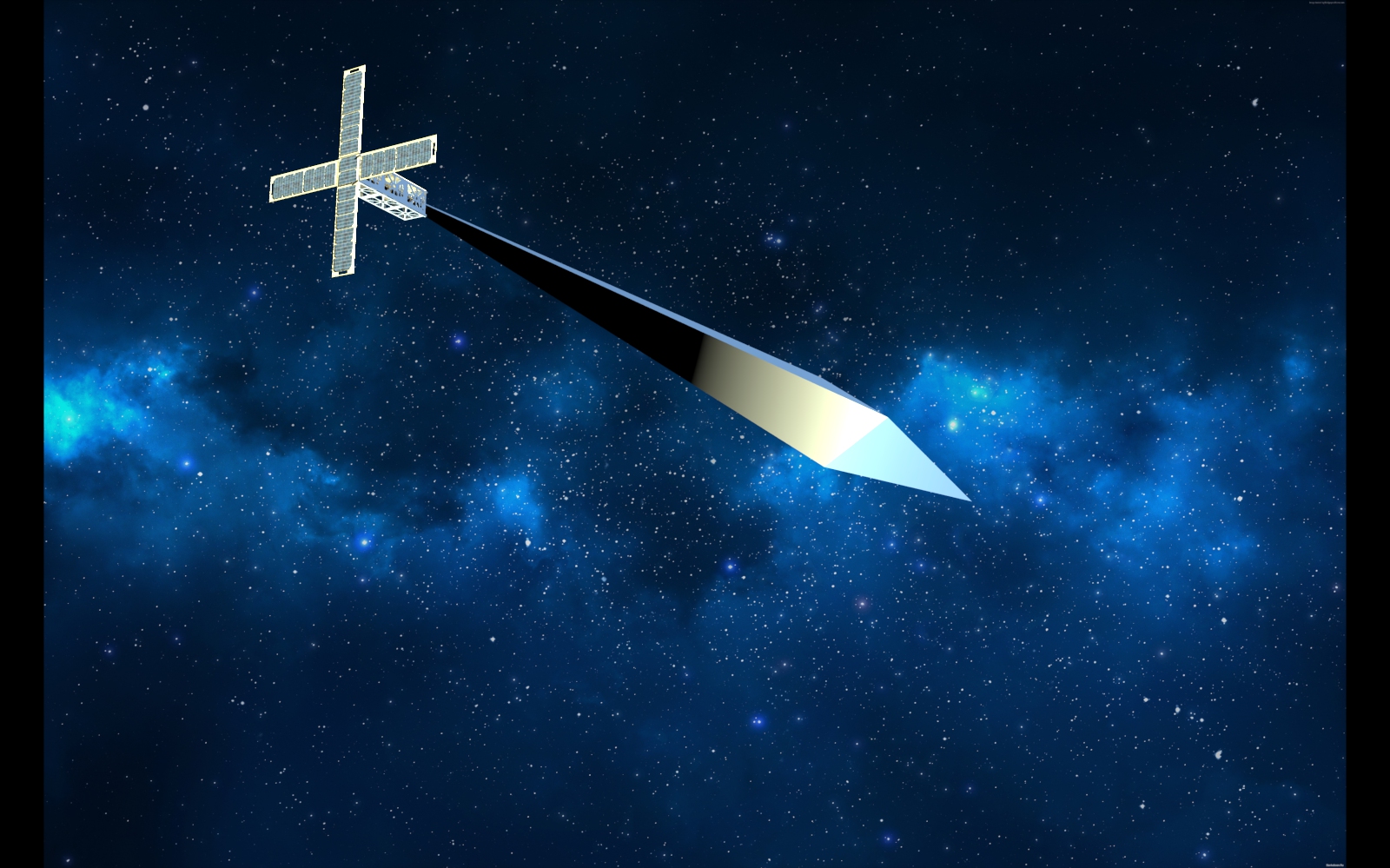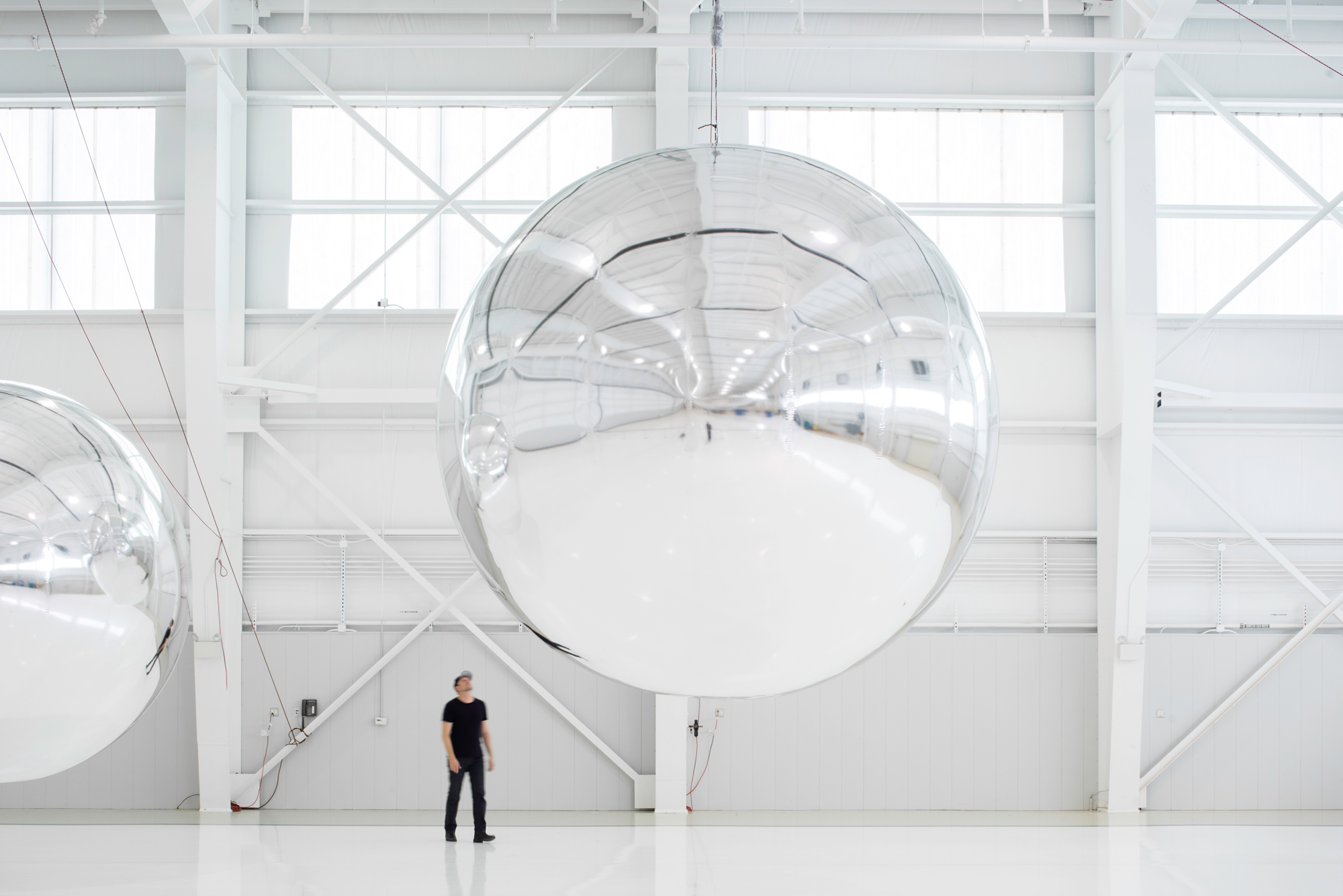Art-ificial Satellite: Museum Wants to Launch Satellite Sculpture into Orbit
Artificial satellites serve a wide range of purposes for humanity, including national defense, communications and scientific inquiry. But artist Trevor Paglen and the Nevada Museum of Art want to launch a satellite with a completely new purpose: to be a work of art.
The Orbital Reflector project will place a 100-foot-long (30 meters) inflatable, diamond-shaped balloon sculpture into low Earth orbit. The geometric object will reflect sunlight while flying over the nightside of Earth, making the sculpture visible, without a telescope, to observers on the ground, according to the project creators. If the mission is successful, it will be the first satellite to "exist purely as an artistic gesture," they said.
"I think that one of the most important things that art can do is give you a reason to look at something, almost give you permission to look at something," Paglen said in a video the museum created about the project. "The Orbital Reflector project … is saying 'Here, I'm going to give you a reason to look up at the sky and to think about what it is that you're looking at.'"
Paglen and the museum are seeking donations for the project through the crowdfunding website Kickstarter, and they've raised $52,869 of their $70,000 goal as of this posting. The campaign runs until Oct. 8.

But $70,000 is only a little more than 5 percent of the total project budget of $1.3 million, according to the project website. The project planners said that thus far, they have raised about 60 percent of the total mission funds from various sponsors since 2015.
The project will continue regardless of whether it meets its Kickstarter goal, Amanda Horn, director of communications at the Nevada Museum of Art, told Space.com in an email. Horn said the Kickstarter campaign is serving as an official global announcement of the project and provides an "opportunity for people to participate."
"Since this is a 'first of its kind' endeavor, we imagined many people would like to opportunity to contribute," Horn said.
Get the Space.com Newsletter
Breaking space news, the latest updates on rocket launches, skywatching events and more!
Paglen and the museum are working with the private spaceflight firm Global Western to oversee the mission. The space-based sculpture (which is made of a material similar to Mylar) would be folded down and packed into a satellite made up of three cubesat units, each about 10 by 10 by 10 centimeters (3.9 by 3.9 by 3.9 inches), or about the size of a brick. The satellite is scheduled to launch into space aboard a SpaceX Falcon 9 rocket in early 2018 as a secondary payload. The cubesat will orbit Earth at about 350 miles (575 kilometers) above the planet's surface. Once the satellite is in orbit, the 100-foot-long, reflective diamond balloon will inflate. The flight is being arranged by the private company Spaceflight Industries, which acts as a mediator between spaceflight providers (like SpaceX) and satellite.

According to Paglen, the sculpture will be visible as a point of light moving slowly across the night sky. He and the Nevada Museum of Art have partnered with the sky-charting app Star Walk 2, which will provide skywatchers with alerts of when the Orbital Reflector passes over a particular location. The satellite's flight data is also available on the project website.
The satellite will orbit Earth for "several weeks" before falling through the atmosphere and burning up, according to the project website. The sculpture will therefore be a "temporary space gesture" and "will leave no trace."
"Nevada has been home to atomic testing, military installations, large-scale mining operations and even experimental communities like Burning Man," Ann M. Wolfe, the Andrea and John C. Deane Family senior curator and deputy director for the museum, said in the video. "So it really comes as no surprise that Trevor Paglen would approach the Nevada Museum of Art for a project of this scale that involves such great risk."

This isn't the first time Paglen has sent a work of art into space. In 2012, he initiated another project, called "The Last Pictures," in which he and his collaborators put a digital collection of 100 photos on a communications satellite that is expected to remain in orbit for about 5 billion years or until Earth is destroyed by the death of the sun.
"An artwork that pushes the boundaries of what we traditionally think of as 'art' challenges the way we engage with the world," the project creators wrote on the Kickstarter page. "Orbital Reflector encourages all of us to look up at the night sky with a renewed sense of wonder, to consider our place in the universe, and to re-imagine how we live together on this planet."
Follow Calla Cofield @callacofield. Follow us @Spacedotcom, Facebook and Google+. Original article on Space.com.
Join our Space Forums to keep talking space on the latest missions, night sky and more! And if you have a news tip, correction or comment, let us know at: community@space.com.

Calla Cofield joined Space.com's crew in October 2014. She enjoys writing about black holes, exploding stars, ripples in space-time, science in comic books, and all the mysteries of the cosmos. Prior to joining Space.com Calla worked as a freelance writer, with her work appearing in APS News, Symmetry magazine, Scientific American, Nature News, Physics World, and others. From 2010 to 2014 she was a producer for The Physics Central Podcast. Previously, Calla worked at the American Museum of Natural History in New York City (hands down the best office building ever) and SLAC National Accelerator Laboratory in California. Calla studied physics at the University of Massachusetts, Amherst and is originally from Sandy, Utah. In 2018, Calla left Space.com to join NASA's Jet Propulsion Laboratory media team where she oversees astronomy, physics, exoplanets and the Cold Atom Lab mission. She has been underground at three of the largest particle accelerators in the world and would really like to know what the heck dark matter is. Contact Calla via: E-Mail – Twitter









